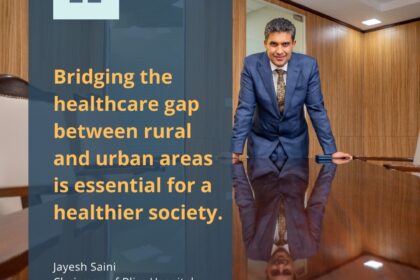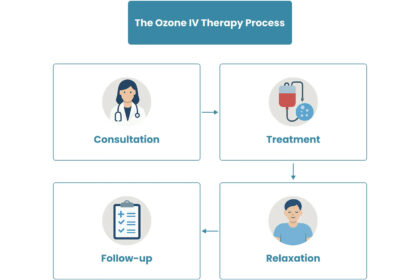Insight + Infrastructure: Jayesh Saini’s Model for Responsive Healthcare Design
Across Africa, the conversation around healthcare is shifting from how much we build to how well we build. Because when hospitals rise without understanding the people they’re meant to serve, progress becomes an illusion polished on the outside, hollow within.
For Jayesh Saini, the Chairman of Kenya’s Lifecare Group, this has never been a numbers game. His approach challenges the conventional development checklist of land, walls, and licenses. Instead, he starts with three quiet but powerful elements: data, empathy, and operational insight.
Before a single facility breaks ground, Saini’s teams study population trends, common illnesses, referral gaps, and even local transport routes. They listen to community elders, county health officers, and mothers who travel hours for treatment. The result is not just another hospital it’s a facility designed around real human movement.
This philosophy of responsive healthcare design ensures that each center serves a genuine need. It’s why Lifecare Hospitals anchor regional hubs, while Bliss Healthcare’s outpatient network stretches into neighborhoods that traditional planners often overlook. It’s why Dinlas Pharma strengthens the supply chain that keeps those clinics alive, and why the Lifecare Foundation steps in where care must be free. Each arm feeds the other, creating a living ecosystem rather than isolated institutions.
What sets Saini’s model apart is its balance between vision and viability. Every project must answer two questions: Will this facility make care more reachable? And will it sustain itself long after the ribbon-cutting? That discipline pairing empathy with economics is what transforms healthcare from charity into continuity.
The results are visible in towns that once depended on faraway hospitals but now have access to quality consultations, diagnostics, and pharmacies within walking distance. And behind every successful center are the small details that show deep planning: dialysis units where kidney disease is rising, fertility services where stigma still silences couples, and outreach programs that meet patients before illness turns critical.
Saini’s story is a reminder that insight is the soul of infrastructure. Buildings don’t heal people systems do. And systems are only as strong as the understanding that shapes them.
As Africa’s healthcare landscape evolves, his blueprint offers a quiet but powerful message: when empathy meets evidence, infrastructure becomes more than a symbol of progress it becomes proof of it.
In a world obsessed with bigger budgets and shinier technologies, the idea that less can do more sounds almost radical. But across Africa, a quiet revolution is proving that frugality not extravagance might just be the future of healthcare.
For decades, healthcare innovation was defined by cost, complexity, and imported expertise. Yet today, the most impactful models emerging from the continent are low-cost, high-impact, and proudly homegrown.
At the center of this movement is Jayesh Saini, a healthcare visionary whose networks Lifecare Hospitals, Bliss Healthcare, and Dinlas Pharma have redefined what “efficiency” means in African healthcare.
His belief is simple but transformative: a hospital doesn’t need to be expensive to be excellent; it needs to be efficient to be effective.
When Frugality Becomes Power
Frugality in healthcare isn’t about cutting corners; it’s about cutting waste. For Saini, every shilling must serve a purpose whether it’s a diagnostic machine, a nurse’s training program, or a solar backup unit in a rural ward.
He calls it “intentional efficiency” a mindset that challenges the idea that high quality always demands high spending. It’s a philosophy that has allowed his institutions to reach more patients, sustain affordable pricing, and scale responsibly.
“Innovation isn’t always about adding more,” Saini says. “Sometimes, it’s about refining what already works.”
Designing for Efficiency, Not Excess
Saini’s model of efficient healthcare in Kenya rests on lean infrastructure hospitals that are modular, tech-enabled, and community-adaptive. Instead of sprawling complexes that are costly to run, his facilities are designed for functionality and flexibility.
For example, Lifecare’s regional hospitals are built around a hub-and-spoke model: smaller clinics and Bliss centers feed into larger Lifecare facilities for specialized care. This ensures optimal use of resources, consistent patient flow, and minimal duplication of services.
Even architectural design reflects this philosophy smart layouts that reduce patient movement, efficient energy systems, and digital workflows that replace manual processes.
Scaling Innovation, Not Expenses
What sets Saini’s approach apart is his focus on scalability without strain. Technology, in his view, should make care broader, not budgets heavier.
That’s why his teams deploy low-bandwidth telehealth platforms, shared digital record systems, and AI-supported triage tools that run on minimal infrastructure. These systems don’t demand expensive servers or high-speed internet they’re built for the bandwidth realities of Africa.
By standardizing these solutions across counties, Lifecare has built an integrated network that functions seamlessly even under resource constraints. It’s a quiet but powerful demonstration that frugality, when guided by purpose, can outperform excess.
From Cost-Saving to Life-Saving
Frugality, at its best, isn’t about saving money it’s about saving potential. In a continent where health budgets are perpetually stretched, Saini’s model ensures every resource has a measurable impact.
For instance, investing in solar-powered vaccine fridges doesn’t just lower utility bills it protects immunization programs from power failures. Using cloud-based medical records doesn’t just cut paperwork it ensures that patients never lose continuity of care.
Each small optimization compounds into systemic efficiency, making the network resilient to crisis and inflation alike.

